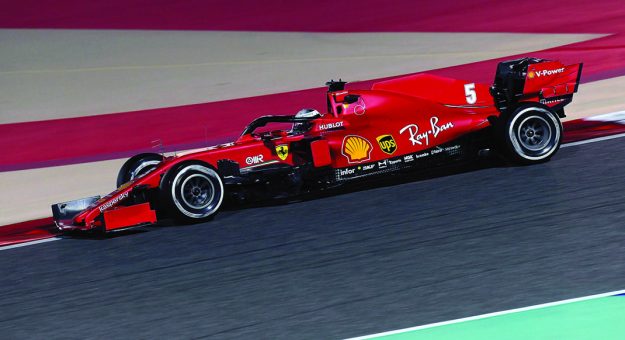Ferrari was fast during the 2019 Formula One season, but the famous Scuderia tumbled downward and 2020 began as one of its worst seasons in years.
Charles Leclerc won twice for Ferrari in 2019 and had eight other top-three finishes during the 21-race season. His teammate, Sebastian Vettel, had a victory and eight other trips to the podium. Yet only one of those combined 19 podium celebrations happened during the final three races of the year.
Throughout the season there were rumors that Ferrari had found a loophole in the power-unit regulations, but none of the rival teams ever filed a protest. The FIA did several intricate examinations of the Ferrari power unit but never declared it illegal.
Prior to the U.S. Grand Prix — one of the final three races of 2019 — the FIA issued a technical directive on fuel-flow requirements for all power units. From that point forward, the Ferraris were noticeably less competitive.
Then, on Feb. 28, 2020, the FIA put out a statement saying that “after thorough technical investigations, it has concluded its analysis of the operation of the … Ferrari … Power Unit and reached a settlement with the team. The specifics of the agreement will remain between the parties.”
Was Ferrari’s 2019 power unit legal? If it was not, why wasn’t the team punished? If it was legal, why did the FIA say anything?
Ferrari wasn’t really quick during 2020 preseason testing in Spain and this led rival teams, including Mercedes, to speculate that Ferrari was sandbagging. Ferrari team principal Mattia Binotto gave the 2020 car a rating of less than six out of 10. So how prepared was Ferrari going to Australia for the season opener?
“As a team I believe we are ready,” he said. “Are we fast enough? No, we’re not and I’m pretty certain of that.”
Binotto was right. The Ferrari SF1000 — so named because Scuderia Ferrari would compete in its 1,000th grand prix in 2020 — was not fast. But with the start of the season being delayed until July because of COVID-19, it took a while to confirm that fact.
Leclerc finished second in the season-opening Austrian Grand Prix and third in the British Grand Prix, round four, but that was due to fluke circumstances and his exceptional skill. Four-time world champion Vettel didn’t get a podium celebration until the Turkish Grand Prix, which was round 14 of 17.
There was no doubt the 2020 Ferrari power unit was slower than the 2019 version. The Ferrari-powered Haas and Alfa Romeo teams also struggled. In addition, the Ferrari chassis lacked aero efficiency.
Ferrari set up a two-front attack to improve the chassis and power unit while getting a head-start on the 2021 season, but the program took time to produce results.
The Tuscan Grand Prix at Italy’s Mugello Circuit, which was Ferrari’s 1,000th championship F-1 race, took place on Nov. 1. It was an embarrassment for the Scuderia. Leclerc finished eighth and Vettel was 10th as only 12 drivers finished the race.
Ferrari performed better during the next race in Portugal, or at least Leclerc did as he qualified and finished fourth. Vettel struggled for pace, starting 15th and finishing 10th.
“I don’t think it’s day and night compared to the Mugello,” Binotto said after the Portugal round. “The car was slightly improved, but it’s not a completely different picture. The battle is so close in the midfield, so a couple of tenths of a second may help being ahead or staying behind.”
Leclerc concurred.
“Some of the characteristics of the last few tracks have been toward what our car needs and have helped us,” he said. “There are small (upgrade) steps all the time, but always small steps in the right direction. But that doesn’t explain the gains we had in the last two races, it’s not up to that.”
What was clear was that neither the car nor its upgrades were suiting Vettel. Ferrari discounted rumors the two drivers were not getting equal equipment. Those rumors arose because Ferrari had announced back in May that it would not renew Vettel’s contract for 2021, so the scuttlebutt was that Leclerc was getting preferential treatment.
Click below to continue reading.
